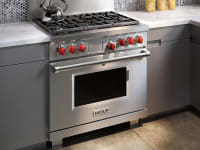You're preheating your oven wrong
There's a reason this is the first step of cooking.
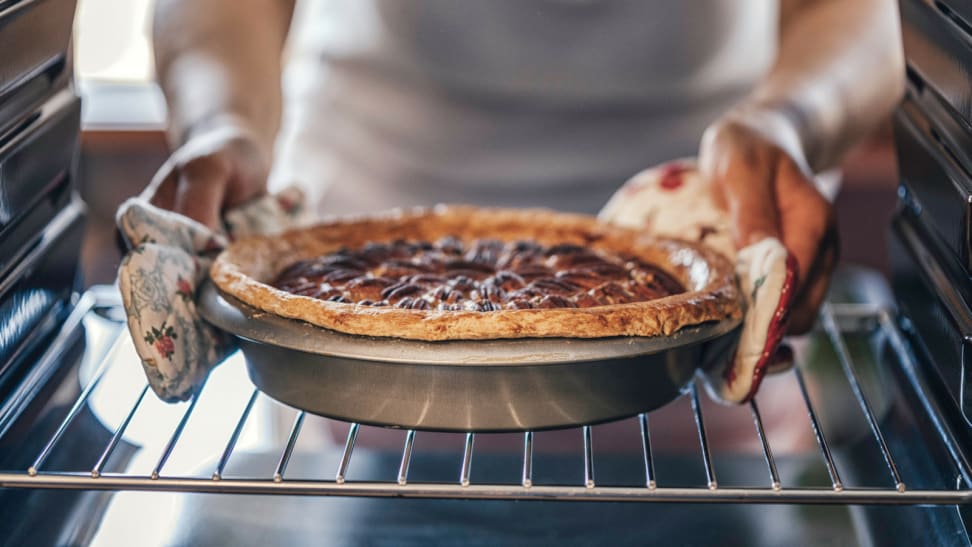 Credit:
Getty Images / GMVozd
Credit:
Getty Images / GMVozd
Recommendations are independently chosen by Reviewed's editors. Purchases made through the links below may earn us and our publishing partners a commission.
If I were to rank famous opening lines, “preheat oven to 350 degrees” would beat out any Shakespeare by a long shot. It’s short, sweet, and downright iconic, as it's been kicking off American recipes for everything from apple pie to beef bourguignon for decades. The phrase is so ubiquitous that many of us never stop to consider what exactly it means, why it’s there to begin with, and whether we need to follow this direction at all.
Whether you’re guilty of skipping the preheat step for your oven or range, or you’re disappointed with your bakes despite following directions, read on to learn what you should be doing and why.
Does preheating really matter?
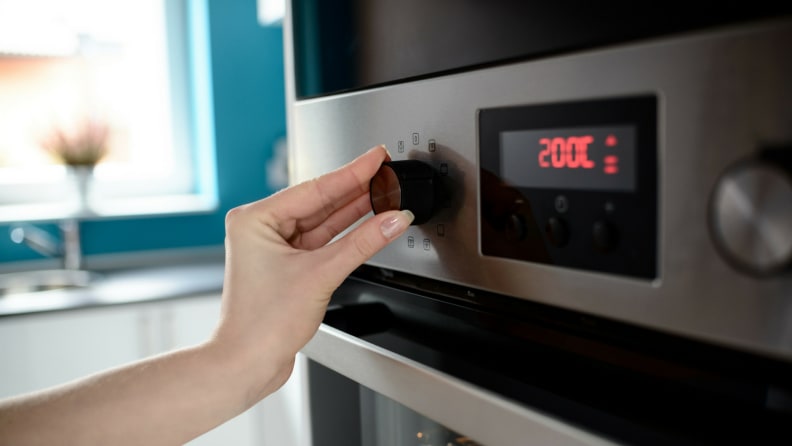
Despite being the very first direction in many recipes, preheating the oven is something plenty of us try to skip or work around.
The short answer? For most foods: Yes.
I know the last thing you want to do when you’re trying to put together an hour-long dinner is wait around 10 to 15 minutes for the oven to preheat. I feel your pain. But this little line is included in so many recipes because it actually does make a difference in how certain foods cook.
A good rule of thumb is that if what you’re baking has flour or eggs, or if it cooks quickly like chicken, preheating is important. For example, ovens need to be to temperature when baking bread in order for the yeast to cause the loaf to raise to its maximum height before the flour sets.
If you toss the pan in just as the oven is turned on, odds are you’re going to have a flat, dense loaf. Lower temperatures also simply won’t set off the proper reactions at the proper time in cookies, pastries, and cakes.
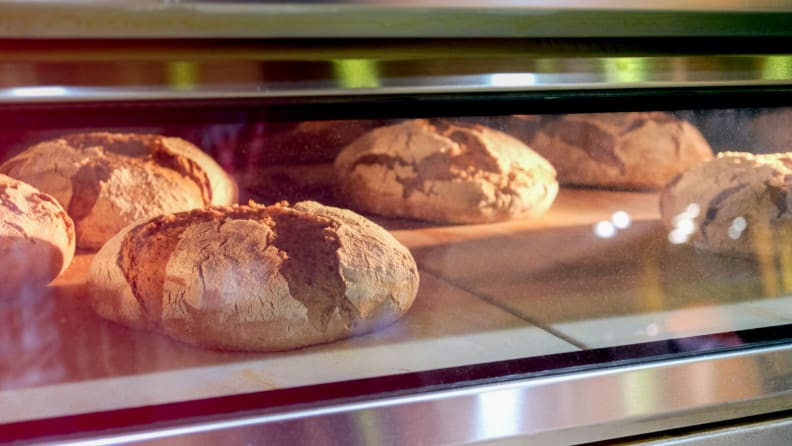
Bread must be started in a preheated oven in order to reach its maximize rise and structure.
Some of us are guilty of skipping the preheat for foods we just don’t care about as much, such as frozen pizzas. You can do whatever you want with your weeknight food, but Reviewed still recommends preheating if you want anything close to a crispy crust on frozen pizzas and the like.
There is some good news for the lazy and tired home chefs among us, though. Preheating the oven isn’t essential for wet or slow-bake foods like casseroles and braises, because the gradual temperature change won’t have an effect on how they cook. If all that matters is that these foods cook, and they don’t require any fancy or delicate reactions to get there, skipping the preheat is entirely fair game.
Try it next time you need to make a pot roast or bake a veggie lasagna for a party, and revel in the guilt-free ease of it all. Make sure to adjust the cook time by a few extra minutes, though.
So, why 350°F?
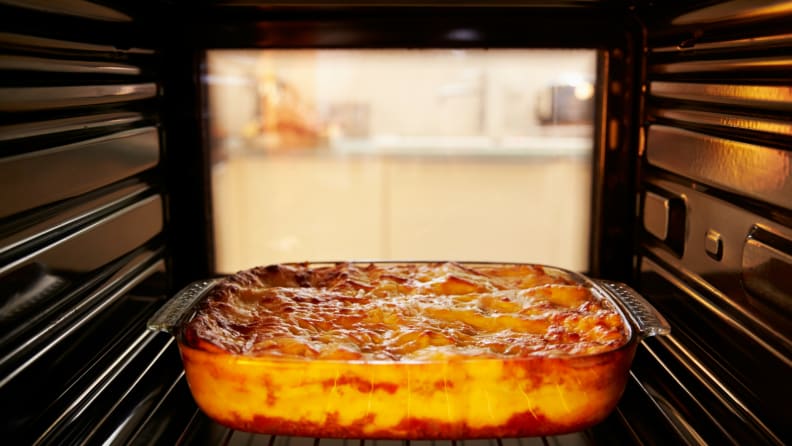
"Wet" bakes like casseroles don't require a preheated oven to come out right.
Of course, not every recipe calls for the 350°F preheat—some casseroles and wet bakes will call for lower temperatures, while pizza needs to placed in the hottest oven possible to get a perfectly crispy crust. But 350°F still seems like some kind of magical number between the the two extremes that pops up everywhere.
The truth is, 350°F isn’t magic—it’s just an average. Over the years, chefs and scientists have found 350°F to be most accurate for baking things without drying their interiors or burning their exteriors.
While low and slow baking at temperatures below 300°F will cook things all the way through and prevent burning, this method risks drying out everything from muffins to chicken parmesan. Baking at low temperatures will also make the Maillard reaction—the browning process that gives toast its color and complex flavor—occur more slowly, meaning your food might look anemic coming out of the oven.
Cakes are one item that can stand a lower baking temperature—between 300°F and 325°—especially if they're leavened with baking powder. The leavener will react and cause rise at around 180°F, which needs to happen before the flour completely sets, but not too quickly that the cake domes terribly in the middle or doesn't fully rise. The slower that process happens, the more height and evenness you'll see in your cake.
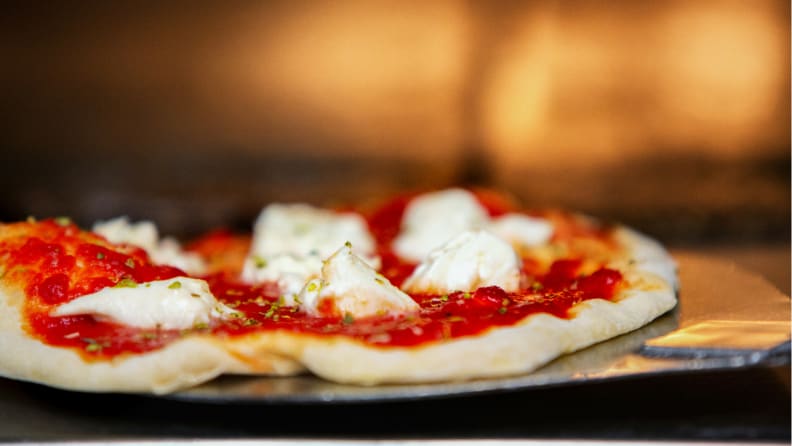
Proper pizza ovens get much hotter than your home oven can, so turning the heat up to the max and using a pizza stone will help you get a crisp crust.
On the other end, while baking things at temperatures over 400°F might be fast and give you crunchy, browned exteriors, the risk for burning the exterior without cooking the interior is high. Thus, 350°F is the “magic” (scientific) solution, a compromise between tender interiors and Maillard-blessed exteriors. Of course, there are always exceptions to this rule—like crisp-skinned salmon and steaks cooked medium-rare or less.
The 350°F temperature is just a standardization of the tricky, finicky science of baking. A recipe for cookies on the back of a bag of chocolate chips might call for a 350°F preheat, but factors including where you live (i.e. your altitude), what type of oven you’re using, and how long you’ve chilled your dough could all affect how “good” this recommendation is—325°F or 375°F might better suit you.
Understanding a bit about the science of baking and how these factors affect bake time is the best way to arm yourself against bad bakes.
Preheating right but food still wrong? Invest in an oven thermometer
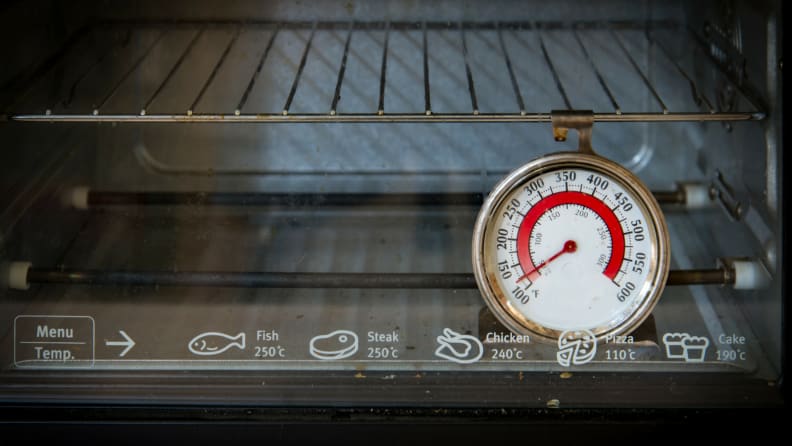
An oven thermometer can help you understand and use your appliance better.
Even if you’re an incredibly type-A person who follows directions to a T and has no interest in kitchen experimentation, there’s a chance your bakes are coming out poorly. If things are consistently overcooked or underdone, your oven’s internal thermometer could be inaccurate.
The solution? Purchasing an extra oven thermometer—like the highly-rated Taylor Precision Products Oven Thermometer—that hangs on one of the racks and gives you the most accurate possible estimate of how hot it actually is inside your oven.
Many ovens work by cycling between two different temperatures, a minimum and a maximum, and the temperature you set on the dial is just the average of those two temperatures—so don’t be alarmed if your extra thermometer seems to have different readings at different times.
To determine if your oven dial isn’t actually setting the temperature you want, take multiple readings over the course of a few hours and calculate the average. From there you can have your oven repaired, adjust the dial yourself, or let your knowledge of the discrepancy guide how you bake in the future.
Does the broiler hack work?
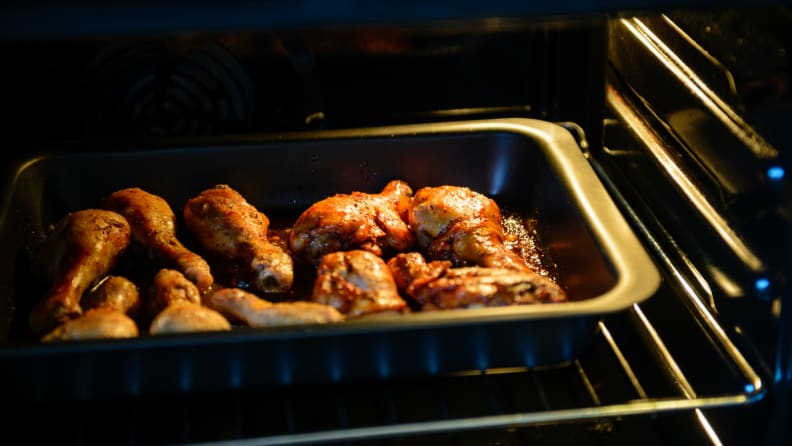
The broil setting can cook lots of foods quickly, but it won't help you preheat your oven.
I’ve read multiple sources claim that setting your oven to “broil” rather than “bake” or “preheat” will make for a quicker preheat. While this “hack” might make your oven ding and let you know it’s at temperature a bit earlier, it’s likely you’re actually just tricking your oven into thinking it’s ready before it actually is.
Because the broil setting activates intense heat from the top of your oven, and most internal thermometers are placed within the upper half of the appliance, your oven might think it’s reached your desired temperature before that temperature is even throughout the entire appliance. And because consistent temperature throughout your oven is critical for most baked goods, this hack could actually hurt your baking instead of speeding it along.
Don’t believe me? You can test this at home yourself with your own oven thermometer.
When I tested the hack on Reviewed’s own electric ranges, setting them to broil for five minutes before switching to “bake” had a negligible effect on preheat speed altogether, while my gas oven at home did ding as though it were ready much faster after I had set to broil.
Gas ovens generally heat up quicker than electric ones, so if you’re a regular baker who is extremely pressed for time, your best bet is to invest in a gas oven and preheat as normal. You might think you can out-smart oven manufacturers, but you probably can’t.


